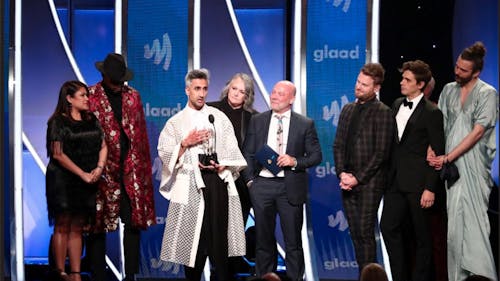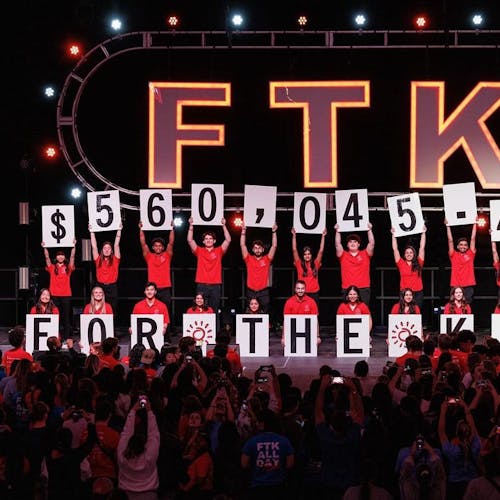Revitalized 'Queer Eye' bolsters LGBTQ+ representation

As Gaypril — also known as LGBTQIA Cultural History and Pride Month at Rutgers — gets underway, it brings with it a call for the celebration of different sexual orientations and gender identities. The release of the third season of Netflix’s wholesome makeover show ‘'Queer Eye'’ embodies this celebration of identity.
The Netflix hit is a more holistic departure from Bravo’s original show "Queer Eye for the Straight Guy,” which aired from 2003 to 2007. Today, the show’s slogan claims to give the subjects of its episodes — lovingly labeled the show’s “heroes” — more than a makeover. As one binge-watches Seasons 1 through 3, this becomes increasingly apparent. The Fab Five has traveled across conservative parts of Georgia and Kansas and opened people’s hearts to the LGBTQ+ community in the face of existing social issues and divisions.
To a large extent, “Queer Eye” has shifted the narrative of reality television from being distant and unrelatable to humble and heartwarming. The Fab Five — the lovable Antoni Porowski, the kindhearted Bobby Berk, the exuberant Jonathan Van Ness, the charismatic Karamo Brown and the brilliant Tan France — has taken pop culture by storm with its talent and expertise.
In the short span of a week, each member of the Fab Five helps address a different element of the nominated heroes’ lives: food, design, grooming, culture and fashion. By the end of the week, the transformation of a hero goes beyond his or her physical appearance and translates into their lifestyle, overall mindset and relationships. The depth and breadth of the scope of stories the show tells is a large part of why "Queer Eye" has been such a successful cultural phenomenon since its debut last year.
It has had a profound impact on Rafael Hernandez, a School of Arts and Sciences first-year.
“'Queer Eye' has helped bring awareness to queer identities, thus making them a more significant social presence. Representation is an important aspect of media and pop culture as a whole. The way I see 'Queer Eye' is that I see myself in these men. You do not feel as alone in society when you see an identity of yours being represented in movies and television. At the same time, 'Queer Eye' makes me want to be a better person, not only for other people but also for myself. They make me feel more connected to society and I want to be able to help and move people the way they do,” he said.
The "Queer Eye" reboot has a diverse cast, which exemplifies its cultural relevance and relatability. While the show has a consistent format, episodes are not repetitive, and audiences have the opportunity to experience the magic of the Fab Five differently as they continue to watch the show.
Each expert is proud of who they are within and beyond their gay identities. They prioritize self-care and preach a philosophy of self-love to every hero. Fashion expert Tan France, a Muslim Englishman with Pakistani roots, is a sophisticated breath of fresh air on television. Culture expert Karamo Brown is a Black man and has been an especially empowering force for many of the show’s Black heroes.
Hernandez said "Black Girl Magic" is a standout, tearjerker episode in Season 3. “The hero is a Black lesbian named Jess, and her journey brings to light a necessary conversation about being a young member of the LGBTQ+ community in today’s society. She is a strong Black lesbian woman. Young gay people face difficulties with being embraced by society and even their own parents, so I really appreciate that Jess’s story was told,” he said.
Cecil Osborne, a School of Arts and Sciences first-year, loves the show for its loud and proud approach to representing LGBTQ+ identity.
“I love how encouraging and validating ‘Queer Eye’ is, especially for fellow members of the LGBTQ+ community. I feel like the few pieces of media that do have queer people in it only show one version of being queer and they make it all about the struggles of being queer. ‘Queer Eye’ certainly doesn't shy away from the struggles that a lot of queer people face, but it also emphasizes that people are more than their tragedies and that it is possible to grow past them and thrive,” they said.



